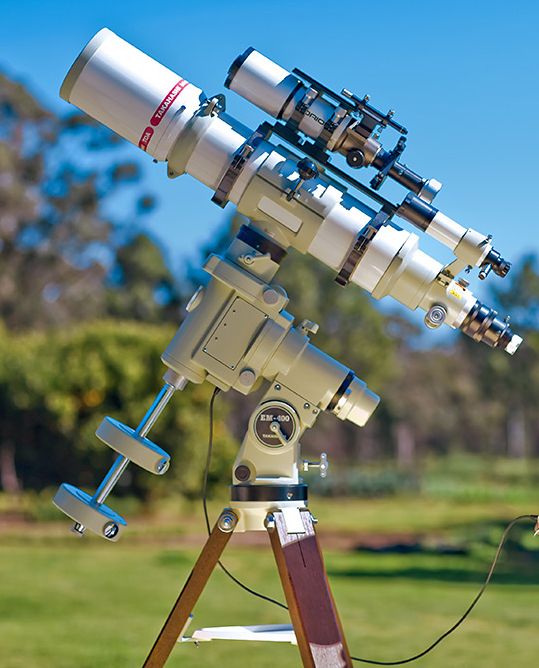Re: The Tarantula.
Thanks everyone glad you liked it, really appreciate your feedback, I'll answer everyone's questions in one post.
The colours are real but they are slightly different to normal DSLR colour response because I used a combination of two cameras.
One was a normal DSLR, to pick up detail, the other was a same model DSLR but it was modified to have a higher wavelength response, not normally visible to the normal camera, enabling it to capture Hydrogen Alpha emission from this nebula, hence the beautiful hues you see here.
Our eyes don't see colour when we look through the telescope because of the tiny light levels astronomical objects emit.
Our Rods and Cones aren't sensitive enough to detect colour.
That's why a lot of people are disappointed when they look through a telescope because the advertisements show wonderful colour images like this on the box but they don't tell you that it's not what you'll see.
So to capture colour we need a very long exposure to enable the image to 'build up' on the image sensor.
This creates two problems:
One - the earth's rotation will cause the stars to 'streak' across the sensor instead of being pinpoints, so we use a electronic tracking mount to counteract the earth's rotation effectively keeping the stars stationary on the sensor for two hours.
Difficult to do so we also use a smaller scope to guide the mount, which is trained to 'follow' one single star as it shifts.
The guide scope keeps this guide star in it's crosshairs feeding info back into the computer for the mount to make tiny adjustments constantly, yielding a perfectly 'stationary' image on the camera sensor.
Two - The camera's sensor heats up quickly when exposing, analogous to the duty cycle of a laser, creating ugly 'noise' in the image which must be minimised.
To combat 'heat noise' we instead limit the exposures to under 10 minutes at a time, allowing the camera to cool down in between exposures and then combine all the exposures to create the equivalent of a two hour exposure.
Also, we take what's called 'a dark frame' for each corresponding exposure, equal to the length of that exposure but with the lens cap on.
This records the 'noise' pattern generated by the sensor for that particular exposure and ambient temperature which we then 'subtract' from the original exposure leaving a beautiful clean image.
The telescope I used for this was a beautiful 130mm aperture f/5.8 pictured below, notice
my lovely 20mW, 532nm greenie that I use for aligning the scopes sitting on top.








